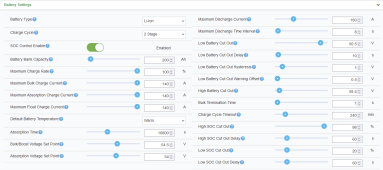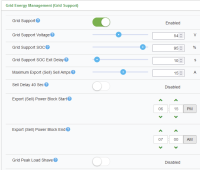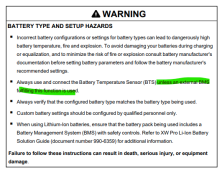So I basically got my XW Pro with MPPT 100/600 and eg4 batteries working... sort of! The intent with my system is that I have a minimum of batteries but I am also grid tied. The batteries should only come into play if the grid drops out and there is not enough PV or it is night time. And this basically works BUT...
I came to realize that though the MPPT was producing 2.5 Kw, it should have been producing 5 Kw on sunny days. So after a bunch of experimentation... I found that if the MPPt is rebooted then it produces 5 Kw... but after a while (different every time) it drops to half output. If I force it to Absorb charge mode, then for a while it jumps to 5 Kw. I can also put the MPPT to two-stage charging and sett he Absorb time to a max of 8 hours... that then produces maximum output for 8 hours. BUT what about the rest of the day!!!!!
Schneider tech support is not only useless, they really test one's patience with stupid suggestions, etc.
Has anyone else run into this?
I came to realize that though the MPPT was producing 2.5 Kw, it should have been producing 5 Kw on sunny days. So after a bunch of experimentation... I found that if the MPPt is rebooted then it produces 5 Kw... but after a while (different every time) it drops to half output. If I force it to Absorb charge mode, then for a while it jumps to 5 Kw. I can also put the MPPT to two-stage charging and sett he Absorb time to a max of 8 hours... that then produces maximum output for 8 hours. BUT what about the rest of the day!!!!!
Schneider tech support is not only useless, they really test one's patience with stupid suggestions, etc.
Has anyone else run into this?










